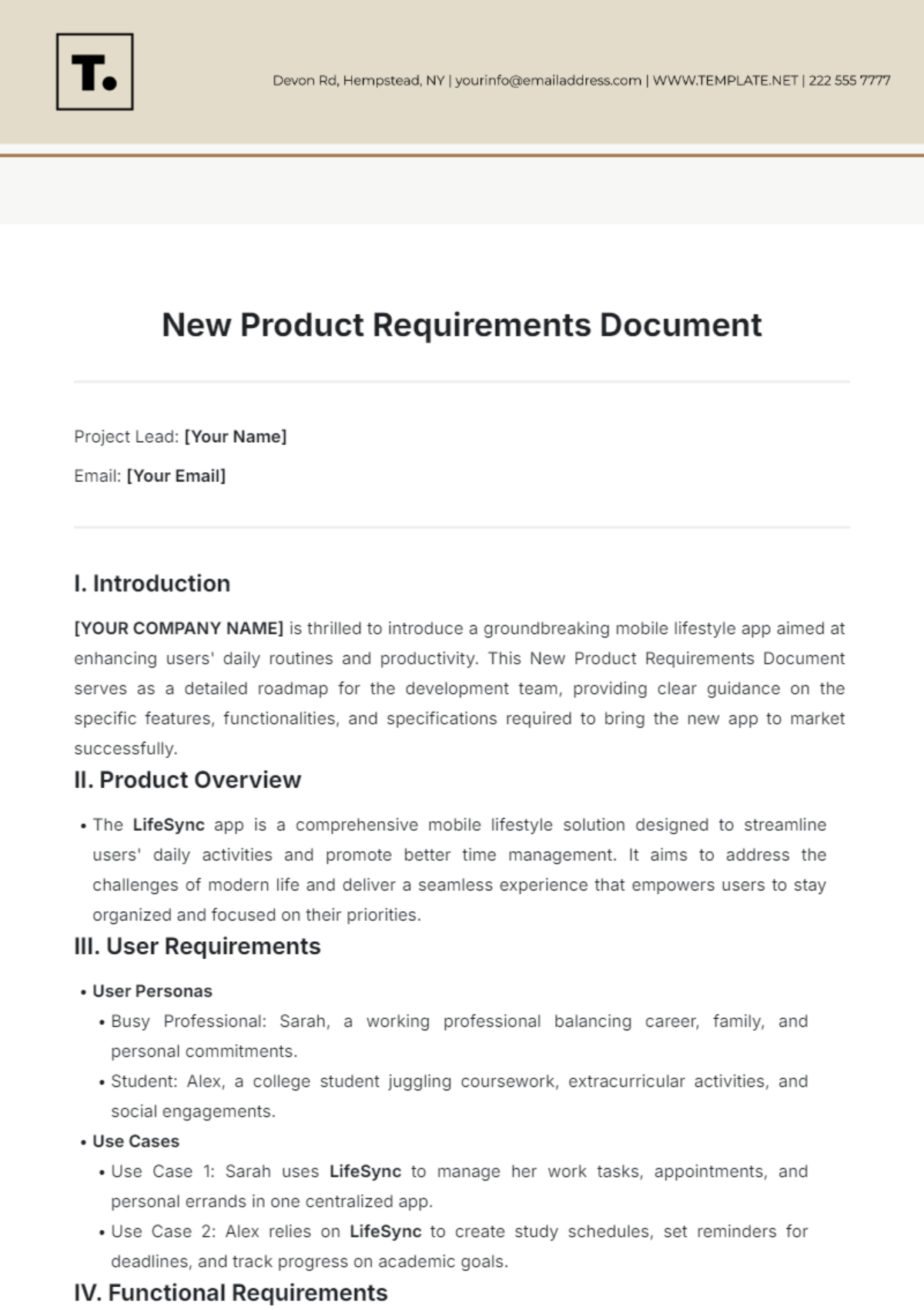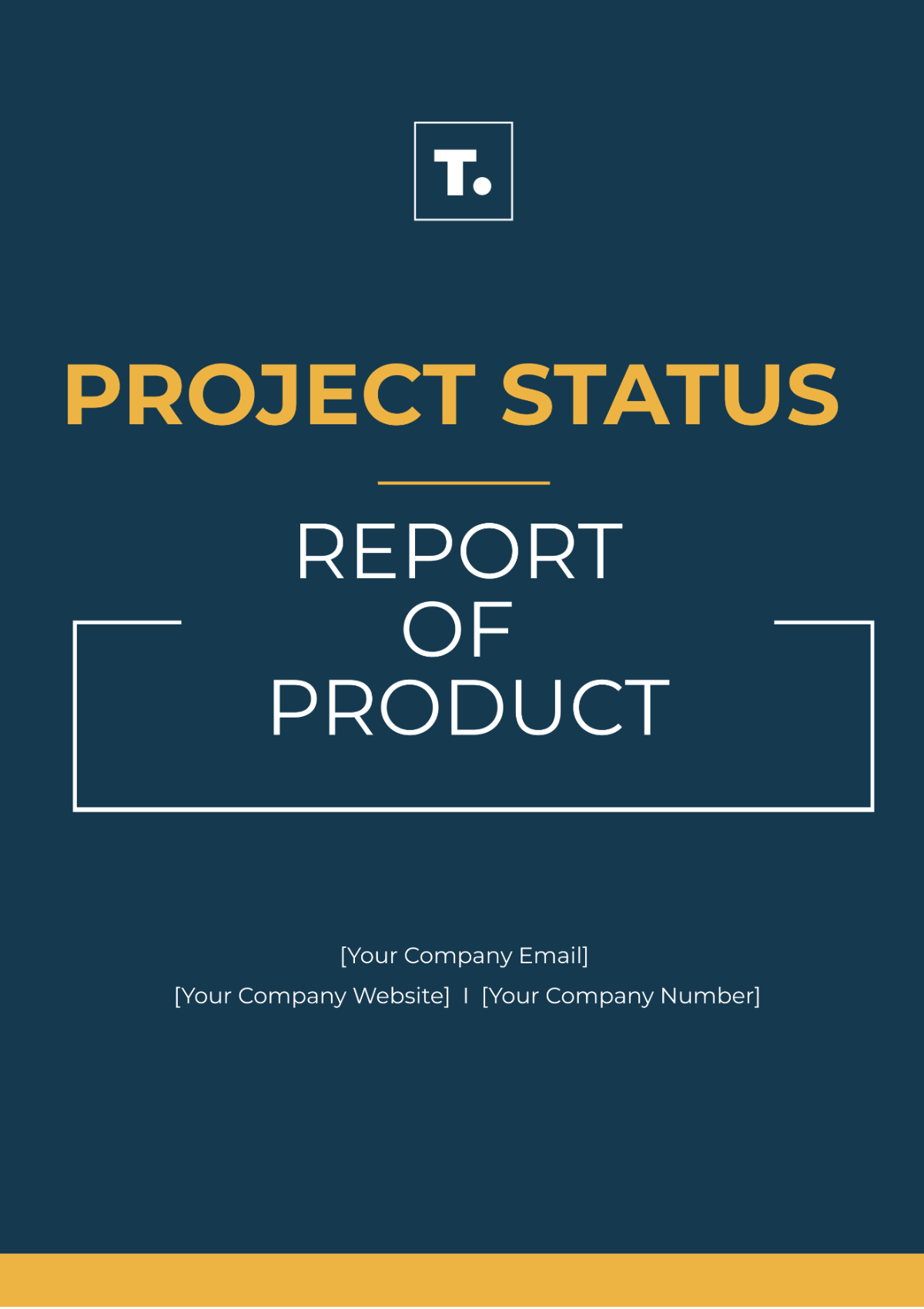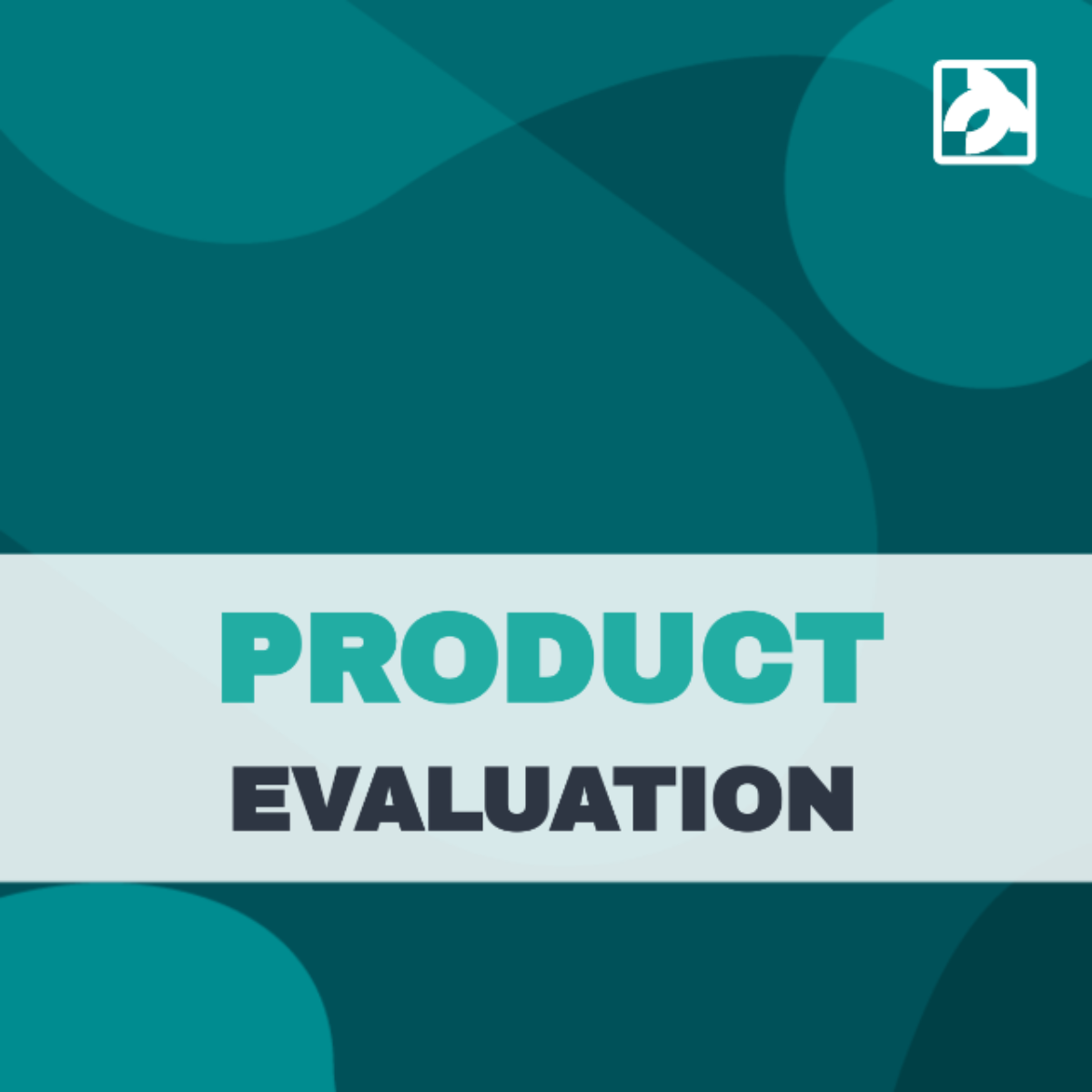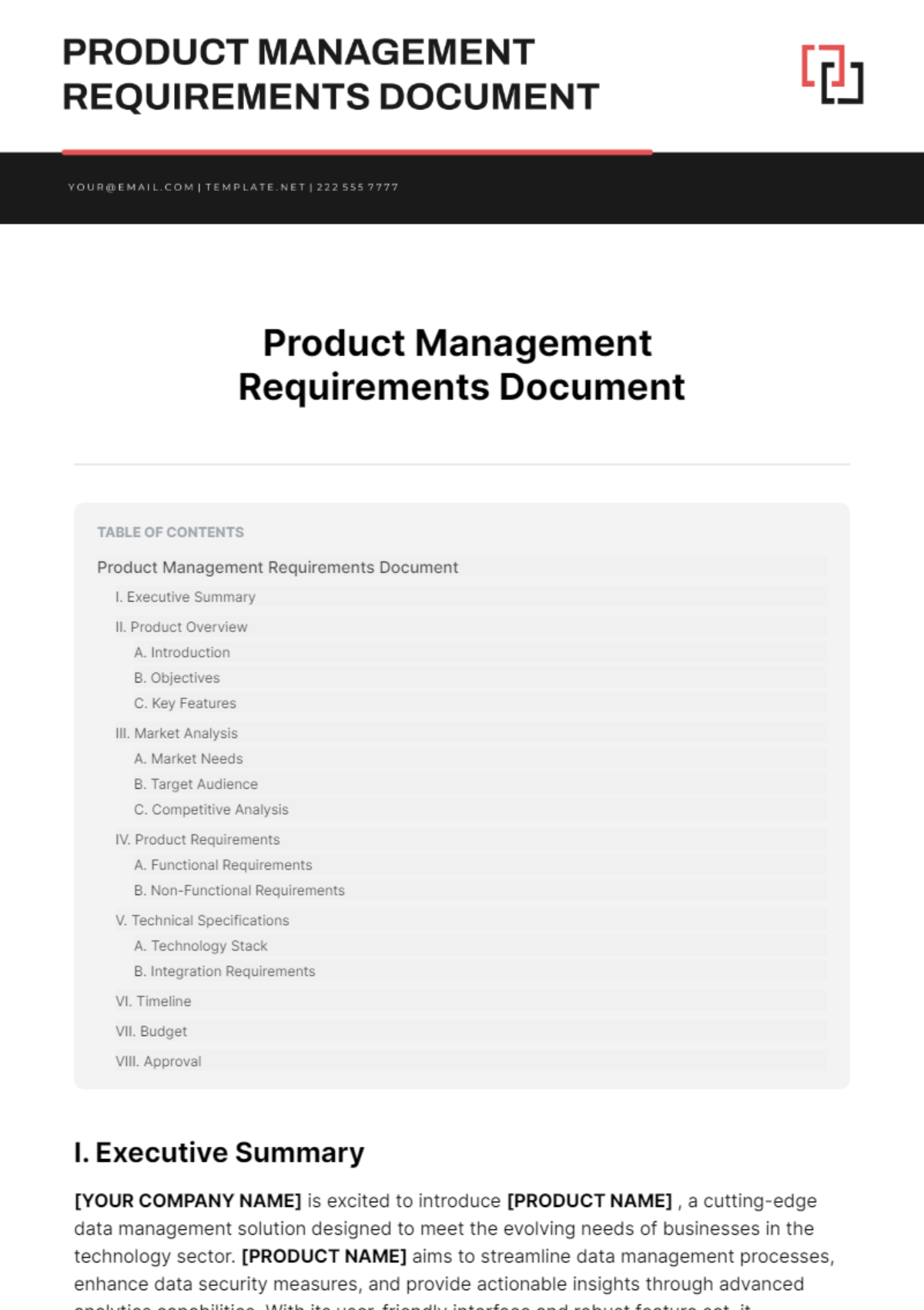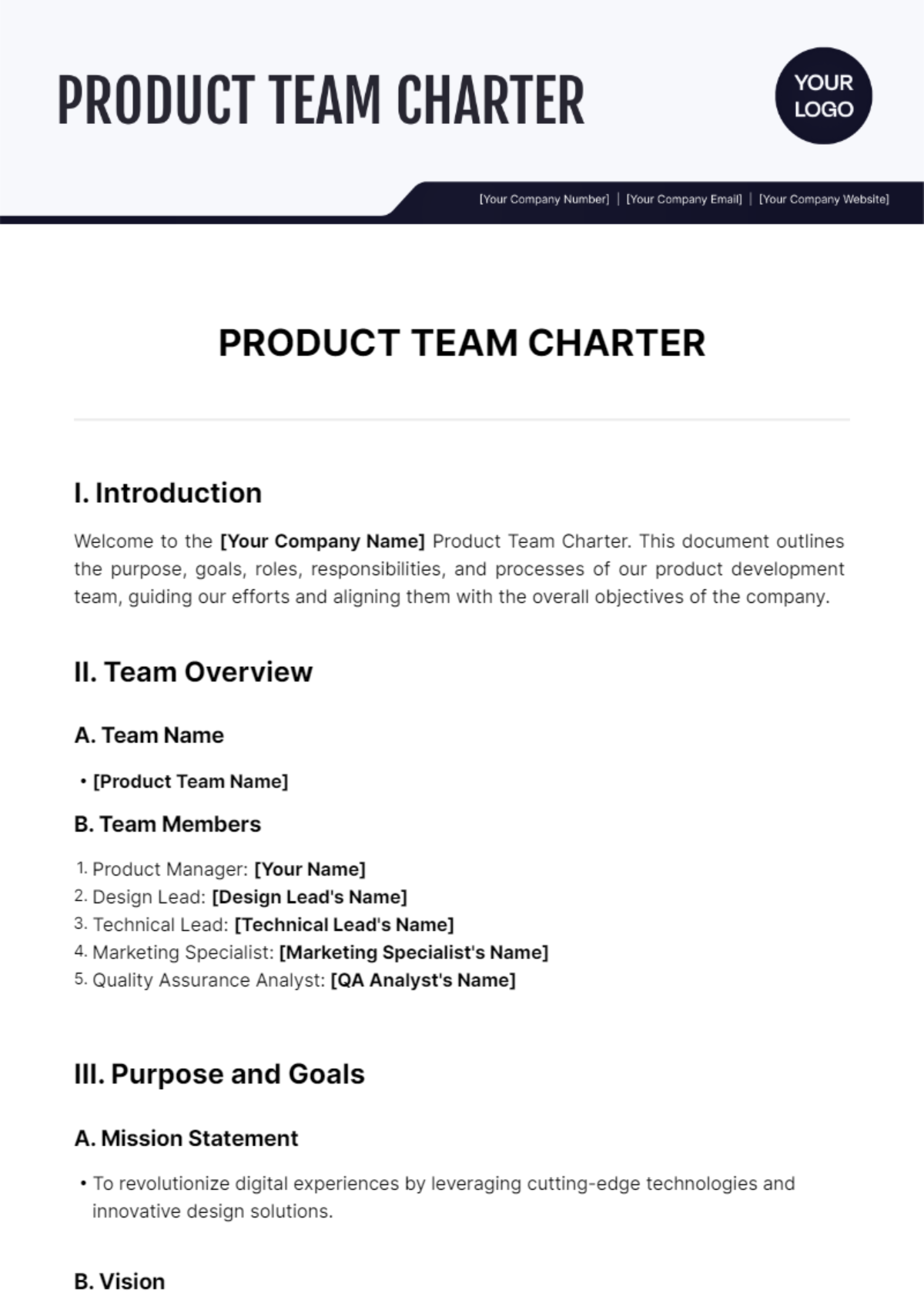Product Non-Functional Requirements Document
Company: [Your Company Name]
Prepared by: [Your Name]
Department: [Your Department]
Date: [2050-04-23]
I. Introduction
This document outlines the non-functional requirements that are critical for the development and operation of [Product Name]. These requirements ensure that the product meets not only the functional specifications but also the operational standards required for [Your Company Name]'s success.
II. Purpose
The purpose of this document is to establish a comprehensive understanding of the non-functional aspects that will contribute to the overall effectiveness, efficiency, and quality of [Product Name]. It aims to align all stakeholders on the criteria that the product must satisfy beyond its functional capabilities.
III. Scope
This document covers the non-functional requirements for [Product Name], detailing specifications for performance, usability, reliability, and other criteria that define the quality of the product.
A. Applicability
This Non-Functional Requirements Document is applicable to all teams involved in the design, development, and maintenance of [Product Name].
IV. Project Summary
[Product Name] is an innovative software solution aimed at revolutionizing the way businesses manage their inventory. The project's objectives include streamlining inventory management processes, improving data accuracy, and enhancing overall operational efficiency. Key deliverables include a web-based application with user-friendly interfaces, real-time data synchronization, and robust security measures.
V. Non-Functional Requirements
A. Performance
Response Time: The system should respond within [100 milliseconds] under normal load conditions.
Throughput: The system should handle [1000] transactions per second.
Scalability: The product shall scale to support up to [1000] simultaneous users.
B. Reliability
Uptime: The product must be operational [99.99%] of the time, excluding planned downtime.
Backup: Regular backups must be performed every [24 hours], ensuring data integrity and availability.
Recovery: The system should fully recover from a crash within [30 minutes].
C. Usability
Accessibility: The product must comply with [WCAG 2.1] standards to ensure accessibility for all users.
User Interface: The interface should be intuitive and user-friendly, requiring minimal training for new users.
D. Security
Data Protection: Must adhere to [GDPR] regulations in handling user data.
Authentication: Supports two-factor authentication and employs strong password policies.
Authorization: Ensures that users can access only the data and functionalities relevant to their role.
E. Compliance
The product shall meet all relevant local, national, and international laws and regulations, including [HIPAA].
VI. Technical Specifications
The system architecture will be based on a microservices approach, utilizing cloud infrastructure for scalability and reliability. Technologies used will include [Java] for backend development, [React] for frontend development, and [MySQL] for data storage. Additionally, the application will integrate with third-party APIs for payment processing and shipping.
VII. Risks and Mitigations
Identified risks include potential performance bottlenecks during peak usage periods, security vulnerabilities due to data breaches, and compliance issues with evolving regulations. Mitigation strategies include conducting thorough performance testing, implementing encryption protocols for data security, and regularly updating compliance protocols.
V. Document Control
Version | Author | Change Description |
|---|---|---|
1.0 | [Your Name] | Initial document creation |
1.1 | [Your Name] | Updated performance requirements |
IX. Approval
Approval by the following stakeholders is required to proceed with the implementation of the non-functional requirements detailed in this document:
CTO: [Elijah Nelson]
Project Manager: [Grace Robinson]
Lead Developer: [Caleb Mitchell]




















